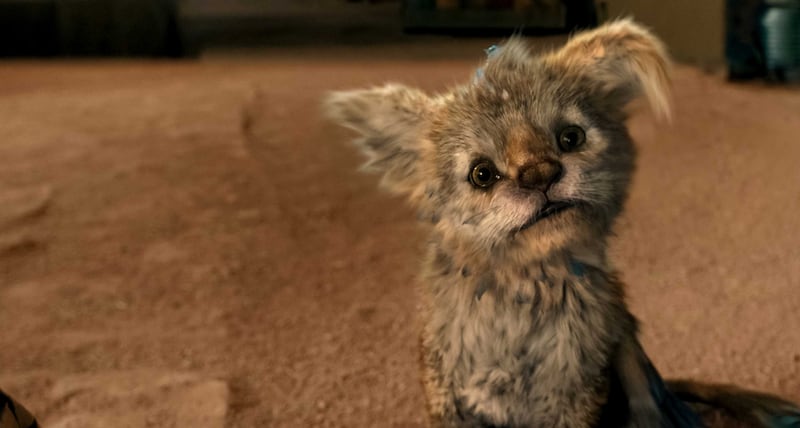For some viewers, Netflix’s Chupa probably looks like an enchanting fantasy adventure film akin to Steven Spielberg’s E.T. or the animated classics Lilo & Stitch and The Iron Giant.
In Chupa, while visiting his family in Mexico, Alex (Evan Whitten) discovers that a chupacabra is living inside his grandfather Chava's (Demian Bichir) shed. This is rather a big deal, since the chupacabra is a mythical creature that Chava previously said doesn’t exist.
Chava is incredibly protective of the chupacabra, who Alex and his cousins name Chupa, for a reason. American hunter Quinn (Christian Slater) wants to capture Chupa, which forces Alex to protect him. Along the way, the pair bond and Alex looks to teach Chupa how to fly and protect himself before Quinn can get his hands on him.
But while Jonas Cuaron — who previously wrote the Oscar-winning Gravity alongside his father Alfonso — directs an original script from Marcus Rinehart, Sean Kennedy Moore and Joe Barnathan, Chupa’s true origins date back to the mid-1970s.
There were decades-old rumours from Puerto Rican farmers about some sort of unseen creature killing hoards of their livestock. In 1975, in the tiny town of Moca, Puerto Rico, a number of animal deaths were blamed on this unknown creature, who at this point didn’t have a name.
Over the next 20 years, the legend of the chupacabra began to spread. People insisted that these monster-like creatures would hide in the forests and then attack goats. They would then allegedly drain the blood of their victims and leave their deflated carcasses uneaten. Then, in 1995, the death of about 150 animals over the course of a few months in Canovanas was specifically attributed to the chupacabras and its myth exploded.
Scroll through the gallery for more stills from Netflix film Chupa
But the chupacabras didn’t just come in one size. As well as reports of larger creatures that, when they stood up on their hinds legs, resembled and even moved around like a kangaroo, there were also rumoured to have been sightings of much smaller versions that looked more like a dog. Then there are some people who say the chupacabra is covered in hair, while others believe that its skin is much more like that of a lizard.
There are even differing reports of the creature's spine. According to one group, they have sharp spikes that look a little like a dicraeosaurus. Others believe that you can see their bones pushing out of their backs. In all circumstances, the chupacabras have razor-sharp teeth. Which makes sense, as they’re basically the animal version of a vampire.
The chupacabra rumours haven’t only been localised to Central America. There have been reported sightings of the alien-like fiend all the way up in the north-east of America in Maine, while people have supposedly spotted them as far south as Chile. Even inhabitants of Russia and the Philippines have insisted that they’ve come across the chupacabra, too.

As you’d expect, there’s a wide variety of rumors regarding how chupacabras came to be. The most sensationalised stories are that they’re a genetic experiment involving a bat that escaped or, even better than that, there’s been speculation that they’re the pets of alien visitors.
Wherever they came from, chupacabras have become popular in Mexico over the past 30 years. Images of the creatures are regularly used in protests, especially against the government, artists across the country have made colorful paintings and sculptures of them, while their likeness can be found on t-shirts and as figurines.
The chupacabras' explosion in popularity hasn’t even been stemmed by the fact that the deaths allegedly made by them have been explained away by veterinarians. Not only have most of the deceased not actually been bled dry, but the most likely explanation is that people are seeing canines suffering from a severe case of mange, a skin disease caused by parasitic mites.
Plus, the original eyewitness to the mass animal deaths in Puerto Rico in 1995 had seen Species just before describing the creature. Her detailed breakdown of what the chupacabra looked like matched exactly with the aliens from the sci-fi horror film.
It’s rather fitting then that another movie is now set to help take the legend of the chupacabra to new heights. Sure there have been B-movies based on the animal, as well as South Park, The X-Files and Futurama episodes, too.
But, thanks to the global availability of Netflix and Cuaron’s family-friendly approach to the story, you can fully expect there to be new sightings of chupacabras the world over as Chupa is released on Friday.













